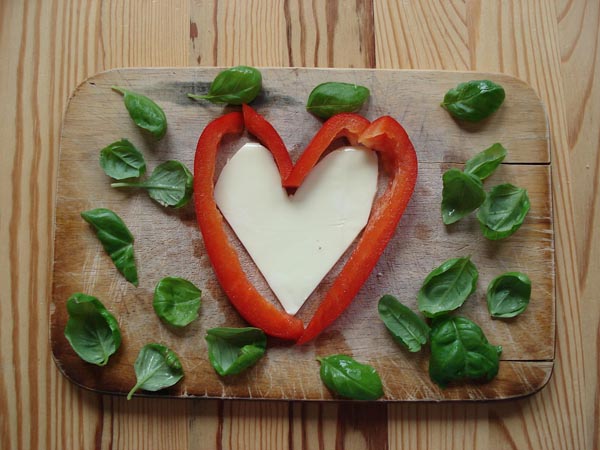Sinatra sang it. Love is lovelier, the second time around. He also made I’ve got you under my skin tremendously popular. Well, that makes sense, because he was a singer. If he were a cook, he would be crooning about leftovers and maybe some extra stuffing between the epidermis and the breast.
Love is enduring. It goes beyond what first meats the eye. Love is more than mere infatuation (ooh, that’s what I’d like!). Love gets us beyond momentary difficulties because we can imagine, almost taste perhaps, what love promises (don’t touch that, wait until it has come out of the oven and cooled down a little) and it is worth the wait. Love teaches patience and gets us over those first hurdles of a relationship (you really like that?). Love teaches us that we should think beyond today. Love is, in so many ways, about, well, frankly, about leftovers.
I don’t mean this in a pejorative sense. The best leftovers come from the best cooking. No amount of disguise (makeup, a curried hollandaise) can make a poor relationship palatable.
And the older I am, the more I realize that the leap between fantasy and consummation is larger than I had thought. Yes, I am still concerned here with food. The eyes may want, but the belly knows what it needs. I may think that I yearn for caviar and filet mignon. But, in the meantime, my heart goes out to matjes herring and braised short ribs.
The dishes on which I was raised have a particularly strong resonance. They bring me back to another place, another time, just a little, and nudge me away from the present. These dishes were usually from home, but they also might have been prized when eating out: French toast (last night’s challah), cheese fondue (stale bread, old cheese), a rice pudding from Murray’s (leftover rice), last night’s roast beef stuffed into a sandwich, hard salami, meatloaf (’nuff said), cold pizza the morning after, soup of any kind. Then there is trifle, tiramisu and a slate of wonderful desserts using stale bread, cake or cookies.
Like a continuing love affair, one of the joys of leftovers is that the dish brings back great memories.
There are layers to leftovers: layers of taste and layers of reminiscence, layers over layers. The best leftovers come with relationships. They are the best that is left over. The best that remains. The kasha Celina serves is the way Grandma made it. We make these dishes and we treasure them. Recipes from friends or family yield something ineffable beyond flavour. They reach out to us. Complexities emerge. They tell stories. Leftovers linger on the table. Love expands.
Sheila Moore, a good friend, passed away recently. Amazingly, in the last weeks of her life, she devoted her energies to putting together a cookbook for her friends and family.
Here is a dish from her book: maple roast parsnips. This is a simple dish for a vegetable that often gets pushed to the back of the refrigerator. Parsnips are a wonderful root vegetable, sweet and easy to cook. I often add them to a soup or stew. Sheila borrowed this recipe from Nigella Lawson and recommended it as a substitute for tzimmes, which is a traditional Jewish holiday dish made from dried fruit and carrots:
Maple roast parsnips
1 kg (2 lbs) parsnips
125 ml (1/2 cup) olive oil
80 ml (1/3 cup) maple syrup
Peel and parboil the parsnips for 10-15 minutes. Drain them and toss them with olive oil. Put them in a pan and dribble the maple syrup over. Roast at 400F (205C) until the parsnips are tender and sticky.





Be the first to comment on "Recipe: Love is leftovers. Leftovers are love"